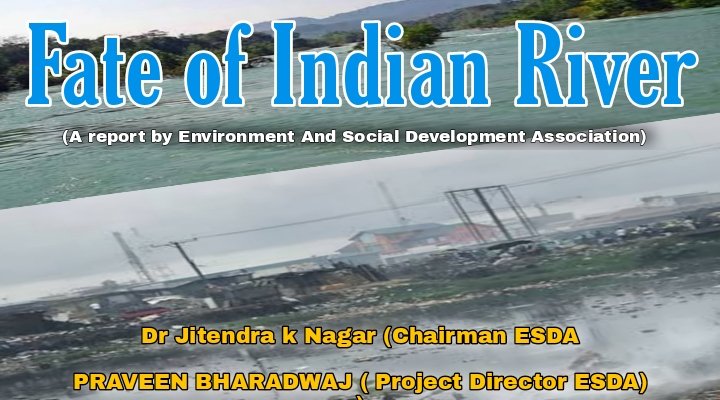Fate of Indian Rivers
According to Central Pollution Control Board, rivers and streams in 31 states and union territories in India are contaminated and have bad water quality
Report By:-Praveen Bhardwaj
( Project Director, Environment and Social Development Association)
Dr. Jitendra Nagar ( Chairman, Environment and Social Development Association)
The main culprit for this fate of Indian river is sewage. In 2019 National green tribunal directed that 100% treatment of sewage needed to insure. NGT directed to setting of swage treatment plants and connecting all drains with these. But we are still lack behind to fulfil these. According to National Inventory of Sewage Treatment Plants 2021 report by CPCB. In India 72.368 MLD sewage is generally. But treatment capacity is only 26,069 MLD. These are not mere a data, this is an indication of bad health of rivers. This huge amount of untreated discharge afloat in rivers directly. Waste water is the main cause of river pollution and this stage of Indian rivers. Government action plan for pollution of Indian rivers is up to the mark for rejuvenate rivers. But only treating sewage cannot make river healthy, minimum water flow is required for this, which is missing in action plan.
The 2nd major problem is dumping of industrial and hazardous waste. Industrial toxic waste directly flows into the rivers and pollute the clean water. Illegal dumping affects water quality as well as , aquatic life and river ecosystem. According to different reports uncontrolled dumping of urban waste into the river spreading the antibiotic resistance.
Illegal dumping of urban waste are damaging the river beds and affect its natural flow as well as quality of water. During our study we found that almost all of the Indian rivers are facing the same challenges, here we are highlighting the two river ecosystem.
There are mainly three processes that helps in rejuvenation of a river mechanical, nature based solution and hybrid. We have so many great examples to show how the fate of rivers can be change. Here we are highlighting two among them :-
No river system in the world has a density of industrial agglomeration comparable to that of the Rhein river. Rhein connecting six heavy industrial countries of Europe. Almost 40 years back Rhein had been turned into a sewage. Continuous monitoring, management and best of sewage treatment facilities has changed Rhein into a cleanest river. Another example to show how a nature based solution:- tree plantation, mannual cleaning and community participation would be a great solution for the above problems, like river Seige.
It is recommended that either all the point sources should be treated before discharging their wastes into rivers and there should be flow augmentation using fresh water through the escapes of Upper Canal in different stretches of the river at regularly to maintain the quality of the river as it is the life line of the large population living along the river. The Government and civil societies should take initiative for Afforestation, Organic Farming, Waste Management, Ponds restoration and Governance & Participation in the river basin. During our studies we found that, if we follow the hybrid solution and nature based solution in a best manner, we can change the fate of Indian Rivers.




